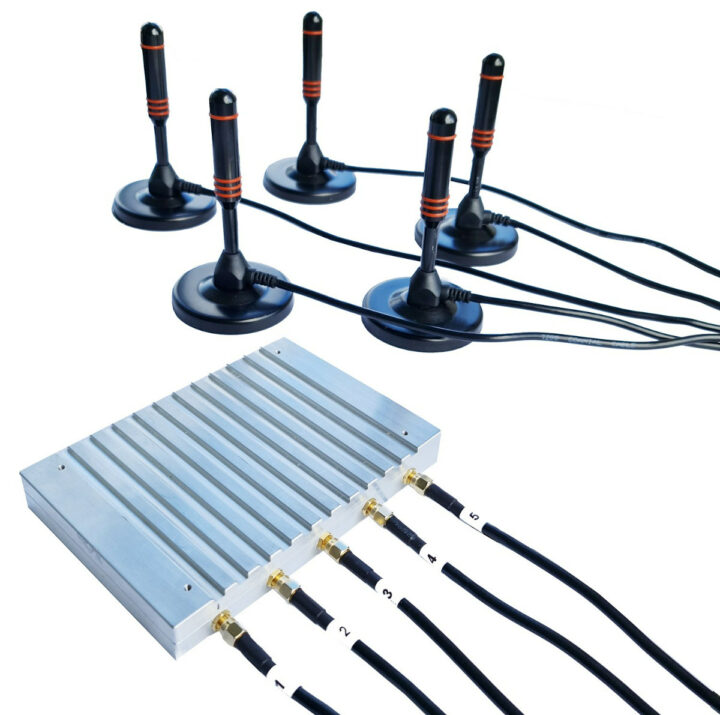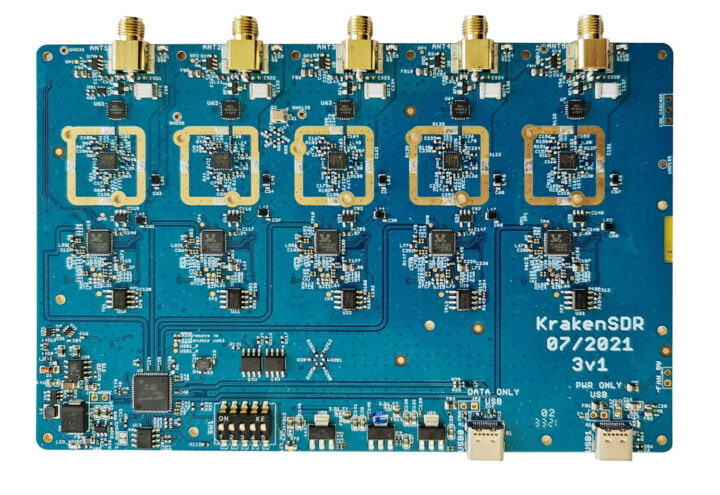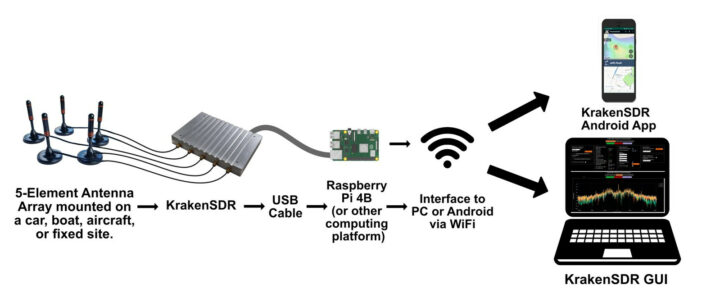KrakenRF KrakenSDR is a software-defined radio (SDR) with five coherently-operated receive channels that’s basically the equivalent of five cheap RTL-SDR USB dongles based on the R820T2 chip with a single board housed in a metal enclosure equipped with five custom antennas.
KrakenSDR operates in the usual 24 MHz to 1766 MHz tuning range and connects over USB to the host system, preferably a Raspberry Pi4 as the open-source Core DAQ and DSP software is designed for the popular single board computer. There’s also an Android for location finding that is free to use for non-commercial applications.
KrakenSDR specifications:
- Five-channel, coherent-capable RTL-SDR (5x R820T2 tuners + RTL2832U ADCs), all clocked to a single local oscillator, ESD protection
- 5x SMA Antenna inputs
- Tuning Range – 24 MHz to 1766 MHz standard R820T2 RTL-SDR range and possibly higher with hacked drivers
- Built-in automatic coherence synchronization hardware
- Automatic coherence synchronization and management via provided Linux software
- Host interface – USB Type-C port for data only
- 4.5 V bias tee on each port
- Misc – Individual tuner on/off DIP switch
- Power Supply – 5V/2.4A and up via a USB Type-C port
You’ll send need an antenna set, a USB Type-C cable, a Raspberry Pi 4 or another host for data acquisition and signal processing, and a 5V/2.4A+ power adapter to complete the setup. The processed data is then typically transmitted over Ethernet or WiFi to another computer or Android smartphone for visualization.
The DAQ software is used to ingest RF data from all five antenna inputs, automatically calibrate and achieve phase coherence via the switches and noise source, and provide coherent samples for the DSP code which supports direction finding and passive radar. Both can run on a Raspberry Pi 4 or a PC, but the passive radar is more computationally intensive and may benefit from running on a more powerful machine.
The KrakenSDR software also comes with a web interface for setting up a direction-finding system, notably adjusting the frequency, gains, and other advanced settings related to the DAQ code. The interface also features a live-spectrum view and graphs of output from the direction-finding algorithm.
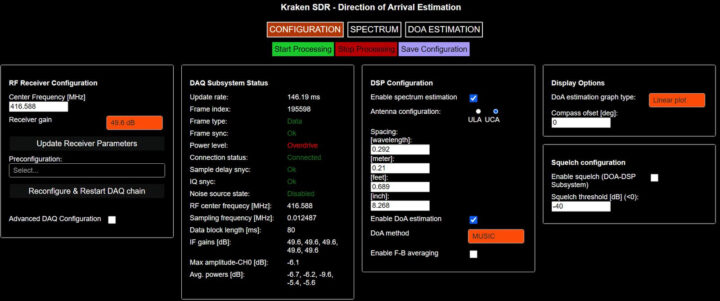
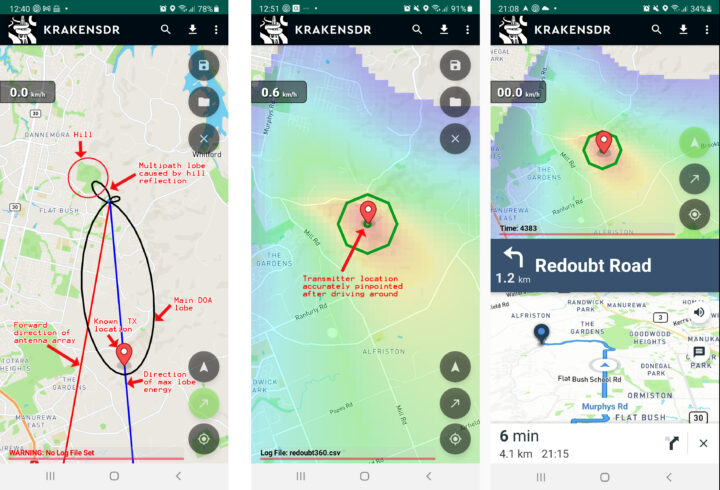
KrakenRF also developed a radio-direction finding Android app that can automatically determine the location of a transmitter leveraging sensors, data connectivity, GPS, and mapping features from modern smartphones.
Some of KrakenSDR use cases include:
- Physically locating an unknown transmitter of interest (e.g. illegal or interfering broadcasts, noise transmissions, etc..)
- HAM radio experiments such as radio fox hunts or monitoring repeater abuse
- Tracking assets, wildlife, or domestic animals outside of network coverage through the use of low power beacons
- Locating emergency beacons for search-and-rescue teams
- Locating lost ships via VHF radio
- Passive radar detection of aircraft, boats, and drones
- Traffic-density monitoring via passive radar
- Beamforming
- Interferometry for radio astronomy
Here’s a demo of the system in action with a car fitted with five antennas driving around to locate a transmitter while providing navigation instructions.
KrakenRF says a typical direction-finding system can be really expensive taking Rhode & Schwarz DDF007 / PR200 as an example with the price claimed to be around $150,000.
The DAQ firmware and direction-finding DSP code can be found on GitHub, while the Android app will be offered for $50 on Google Play, but backers from Crowd Supply will get a free license.
The crowdfunding campaign ended last November, but KrakenSDR is still available for pre-order on Crowd Supply for $299, while the five magnet-mounted antennas add another $99. Shipping costs $8 to the US, and $18 to the rest of the world. The antenna set should ship by Mar 31, 2022, while the KrakenSDR is expected by the end of September 2022.

Jean-Luc started CNX Software in 2010 as a part-time endeavor, before quitting his job as a software engineering manager, and starting to write daily news, and reviews full time later in 2011.
Support CNX Software! Donate via cryptocurrencies, become a Patron on Patreon, or purchase goods on Amazon or Aliexpress


